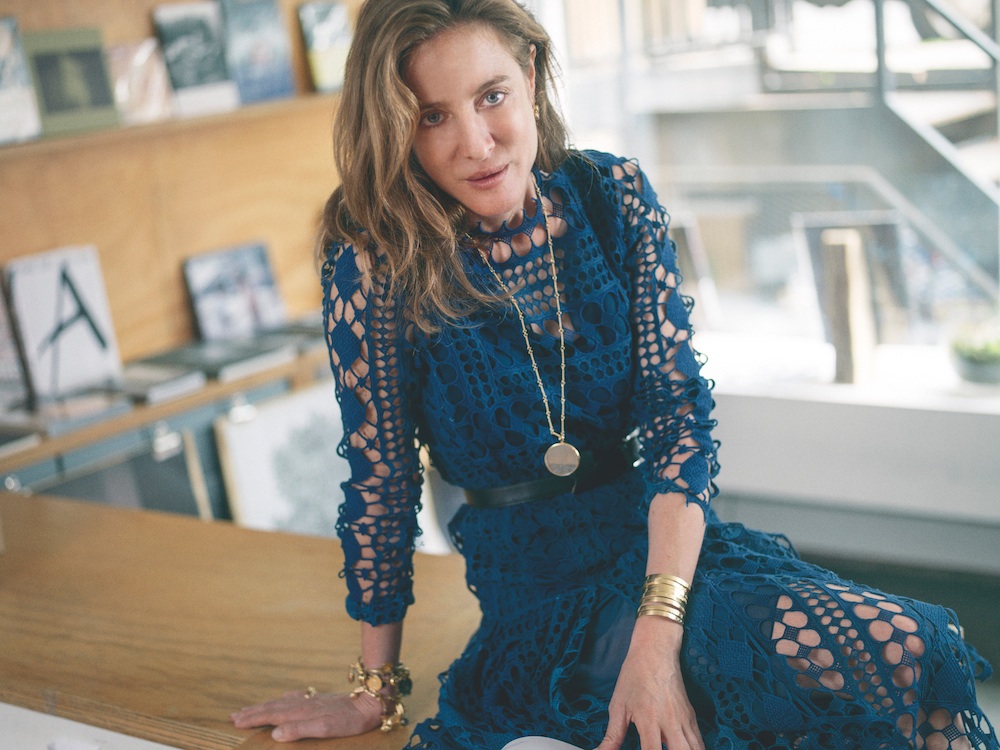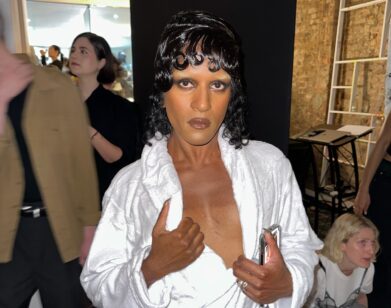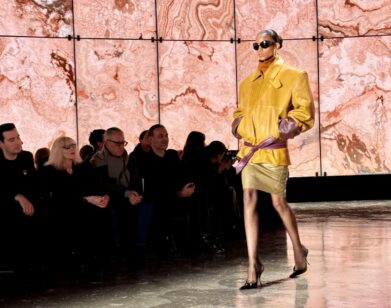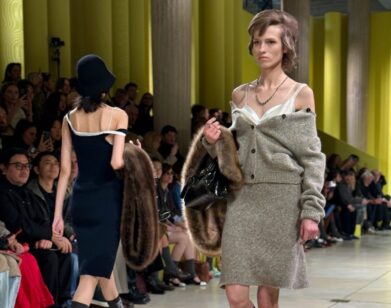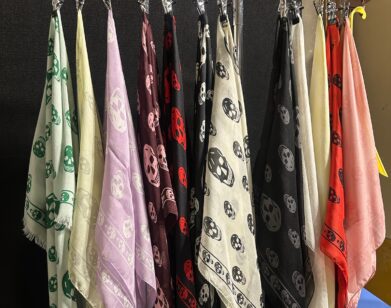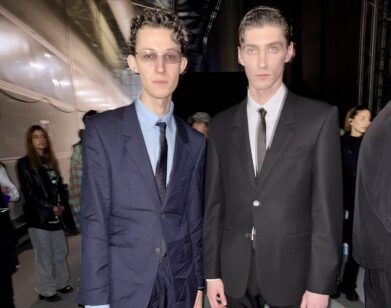Aurélie Bidermannâ??s Wandering Eye
Parisian-born jewelry designer Aurélie Bidermann makes bits and baubles for the jetset life, one she happily seems to be living. Ticking off the list of destinations for her summer travel: “Apulia, Taormina, all the islands around Sicily.” Bidermann’s love of exploration has made its way into her line of colorful, covetable bijoux, which wittily integrate methods and materials culled from her travels, with gold-dipped organic materials for a luxurious, laid-back bohemia. Her Copacabana bracelet, for example, marries a minimal cuff silhouette with earthy, vibrant friendship bracelet-esque braiding.
After getting a Master’s degree in art history and working at Sotheby’s, Bidermann studied gemology in Antwerp. She started her line after a particularly influential visit to India, and art and culture routinely figure into how she sources her inspiration. It’s especially fitting that Bidermann mentions La Piscine, the 1969 French Riviera-set erotic thriller, starring Romy Schneider, Jane Birkin, and Alain Delon, as one of her favorite films (“The setting, the atmosphere, the pictures, to me, is really perfect—all of it,” Bidermann says). The sun-soaked film perfectly encapsulates the louche, luxurious spirit of her designs.
In addition to her Parisian flagship, and selling at Barney’s, The Webster, and Opening Ceremony, Bidermann has opened the doors to her first New York outpost, now open on SoHo’s Lafayette Street, and carrying exclusive pieces featuring scarabs and lapis lazuli for the launch and featuring a commissioned mural from Madrid-based street artist REMED. Interview recently caught up with Bidermann over cortados and pastries at The Smile in New York.
COLLEEN KELSEY: What is your first memory of connecting with jewelry?
AURÉLIE BIDERMANN: I have two important memories. My grandmother was a very refined, sophisticated person. She was very à la mode at the time. She would go to houses like Cartier or Van Cleef and ask them to do custom jewelry, and she had an amazing collection of fine art made for her. The first time she showed it to me and she opened the boxes, I was maybe six or seven. I was like, “Wow.” I decided after that, “I want to be a jewelry collector. To start, I’ll do charms.” From when I was six years old to a late teenager, 20, something like that, for every Christmas or Hanukkah, whatever is was, I would ask for little charms. Fabric ones, precious ones, I had all kind of charms.
KELSEY: They resurface in your work now as well.
BIDERMANN: I love all of them. Scarabs are very present in every one of my collections. Turtles. Ladybugs. The apple core—”The Big Apple.” Claes Oldenburg, he had an exhibit last year at the MoMA. I went to see it, and as I was looking at his work, I found an apple core that he did in metal.
KELSEY: How has your background working in art affected how you approach making jewelry? Are there any direct influences?
BIDERMANN: It’s like music, I don’t know. So many have had an influence on my work. From [Mark] Rothko to [Robert] Rauschenberg to [Tom] Sachs to [Lucio] Fontana to [Elie] Nadelman. I went to see Fontana in Paris a couple months ago [Lucio Fontana: A Restrospective at Musée d’art Monderne].
KELSEY: What parts of the world, would you say, have been the most inspirational?
BIDERMANN: Positano, of course, and the Italian coasts. Every country that I went to in South America, from Colombia to Ecuador to even the Galápagos, all the arts and crafts, their handicrafts are amazing—rich and gold.
KELSEY: What about materials? I noticed in a lot of your individual pieces reference the natural world.
BIDERMANN: I love to use unique materials. I love organic pieces. I take real things like feathers, leaves, or shells, and dip them in gold. I did that with scarabs, too. Believe it or not, that everyone to me, they think it’s so beautiful. [laughs]. And butterflies. I also love to use fabrics mixed with metal.
KELSEY: What do you have in store for the fall collection?
BIDERMANN: The inspiration was a couple of things. It was a mix between Paris and New York, late ’60s and early ’70s. Then it’s an organic collection, you have a lot of leaves, a lot of lushness, trees, branches, etc. There was an artist in the late ’60s, his name was Rory McEwen, the father of Adam McEwen. He specialized in botanic art and still-life paintings. I went to see his exhibition last summer. It was in Kew Gardens in London. I had an epiphany. He’s very much in my work.
KELSEY: The late ’60s and ’70s seem to be a running theme; I know the era also has an influence on the new store.
BIDERMANN: The Paris store is inspired by the African coast, from the late ’60s to early ’70s, with bold colors. The New York one also has a ’60s, ’70s light to it, with the same DNA as in Paris. You have the same color code, and you’ll see the same materials, but it’s not the African coast. I wanted to adapt the store to New York and have a sense also of the American story—it’s more laid back, California, late ’60s and early ’70s.
I wanted to do a store that wasn’t going to be traditional. You don’t want to feel intimidated; you want feel welcome. Sometimes when I go into stores, I come out very cold. The idea is when you’re inside the store; you have the feeling of a living room. Everything is open. It’s the light of California, but mixed with the couture of a New York life.
THE AURÉLIE BIDERMANN NEW YORK BOUTIQUE IS NOW OPEN AT 265 LAFAYETTE STREET.

